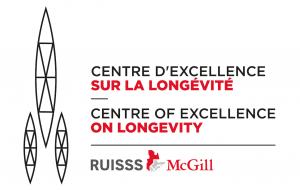Brain structures and gait control in aging
Background
Gait speed is a simple and reliable clinical measure of performance, safety and gait control. It reflects the integrated performance of multiple peripheral organ systems (e.g.; perceptual system, peripheral nervous system, muscles, bone and/or joints) which are controlled by the central nervous system. Numerous brain regions are involved in gait control during selfpaced walking to maintain a safe and optimal performance.
Slow gait speed is a marker of impaired locomotion which is associated with both normal and pathological aging. Gait speed is slower in patients with cognitive impairment as compared to cognitively healthy individuals (CHI), even in the early phases of cognitive impairment, such as mild cognitive impairment (MCI). This association of gait speed and cognitive impairment suggests that the pathological brain processes which cause MCI and lead to a loss of brain volume also affect the control of gait.
Lower brain grey matter (GM) volumes have also been independently associated to poor performance in cognition and locomotion. Loss of GM volumes can be found in both normal and pathological aging such as MCI. However, the pattern of MCI-related low brain GM volumes is different to that of normal aging. Recently, a systematic review examined MCI-related structural brain abnormalities: besides low hippocampal and entorhinal cortex volumes, which are most frequently reported, brain GM volume loss was also demonstrated in a distributed network (e.g.; temporal lobe, cingulate, insula; parietal, frontal and occipital lobes). A limited number of studies have examined the relationship between brain GM volumes and gait speed. These have demonstrated a positive association between hippocampal and frontal region volumes and gait speed. The brain volume loss associated with reduced gait speed in normal aging is also not yet fully established.
Objective
- To better understand change in gait control which occurs through physiological and pathological (e.g., cognitive impairment) aging.
Methods
The design is a cross-sectional study, which uses the baseline assessment of the “Gait and Alzheimer Interactions Tracking” (GAIT) study.
Prospects
To better understand the topographical organization of gait control in aging while using anatomical structural covariance
To provide a rationale for clinical intervention targeting the specific regions involved in gait control to improve gait in non-demented older adults
To improve the screening of patients at risk of gait disorders and cognitive impairment.
Partners
Angers University Hospital, France
Department of Neurology, Geneva University Hospital, Switzerland
Institut universitaire de gériatrie de Montréal, University of Montreal
Learn more
- Associating Brain Structure Covariance and Gait Control in Aging
- Associating the volume of grey brain matter with gait speed and related structural covariance networks in cognitively healthy individuals and in patients with mild cognitive impairment: A cross-sectional study
- Associating of hippocampal volume with gait variability in pre-dementia and dementia phases of Alzheimer’s disease: Results of a cross-sectional study



